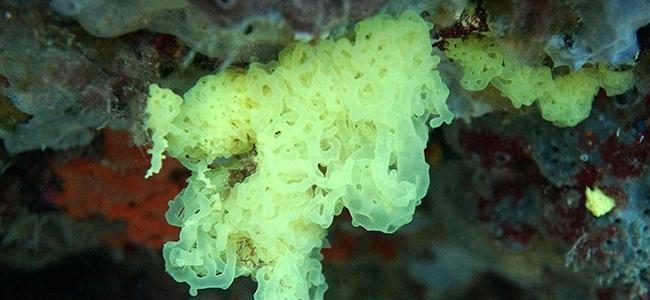Calcareous sponges (Calcarea) are a class of exclusively marine Sponges that, as its name indicates, present spicules composed by calcium carbonate. These spicules, generally are straight, although there are species in which they can have between 3 and 4 radii. Calcareous sponges are small sponges, rarely exceeding 10 cm in height. Its body, tubular or cup-shaped, can adopt the three types of organization present in the Prolifera ...
- Asconoid. Simpler body structure, adopting a tubular vessel shape. In the external face they have numerous pores (ostia) that are connected with the most internal face of the vessel where a chamber called spongiocele or atrium is formed. On the surface of the atrium, there are flagellated cells that generate a current through which water enters the external pores towards the atrium, thus capturing the suspended particles.
- Syconoid. The wall of the body adopts a configuration in which it folds on itself, piling up from what we could consider a zig-zag form. As a consequence, the wall is generally thicker than in the case of the asconoid form. With this conformation of the wall, they manage to increase considerably the filtering surface with respect to the asconoid form. They also have a central chamber.
- Leuconoid. It is the most complex body structure. They have a reduced atrial cavity, and therefore the appearance of these sponges is considerably solid. They can have more than one opening for the exit of filtered water.
Although they are mostly monotonous and dull colors, there are species of calcareous sponges with bright colors (yellow, red, green or violet). They usually occur in surface water less than 100 meters deep.
Although initially considered a class with a small number of species, at present, a total of 675 species of calcareous sponges have been described in our oceans and seas, representing approximately 9% of all non-extinct sponge species.
